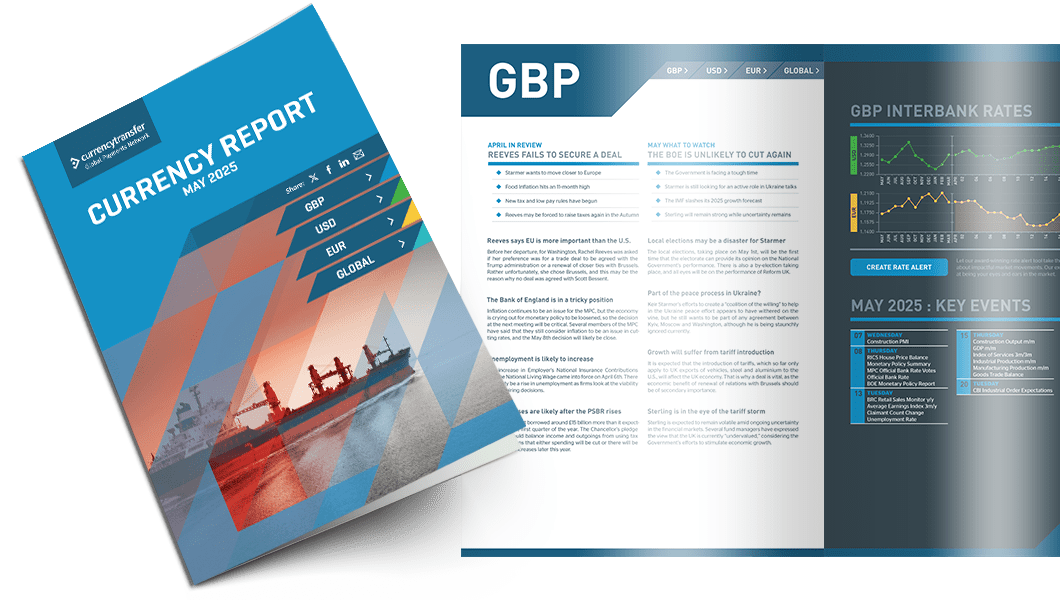
Highlights
- Is Labour going to be able to get a majority?
- The Fed must consider political risk
- The case for a rate cut is gaining strength according to Lane
Lingering inflation fears will deter the Bank of England
Interest rates have remained at 5.25% since last Summer as deflation has slowed considerably. Several MPC members have commented about the need for inflation to be on a confirmed downward path before rates can be cut. Andrew Bailey, the Bank’s Governor, recently confirmed that, unlike the ECB, the Bank doesn’t feel it needs to wait until inflation reaches its 2% target before cuts begin. He believes that if they wait inflation may well “overshoot”.
The Council of Mortgage Lenders recently announced that they believe the UK is on the verge of a house price “Boom”, with average prices rising by as much as 25% over the next four years. Their optimism is based upon the likely fall of one hundred basis points in the base rate and a substantial fall in the cost of living.
This news will be welcomed by the Labour Party, which following last week’s local council elections is now almost certain to become the Party of Government when the Prime Minister calls a General Election.
Although the Election results were entirely predictable, Labour will need a landslide of even greater proportions than was managed by Tony Blair in 1997 to overturn the Conservative’s eighty-seat majority.
It may well be that the country will face a period of uncertainty, as a hung Parliament is a distinct possibility.
Rishi Sunak’s position as Leader of the Conservative Party appears to be safe for now, as rebel MPs are not planning to ditch him as leader before the Election. He tried to put a brave face on the local election results, but in truth, the Conservative’s thirteen-year period in office is ending.
This week’s meeting of the Monetary Policy Committee is unlikely to cause any shock waves to ripple through the market. It is considered almost certain that rates will remain unchanged.
Following the result of the vote on interest rates, there is a raft of tier-one economic data due for publication on Friday.
First Quarter GDP, as well as industrial and manufacturing production figures, will be released. None of these are expected to make comfortable reading for the Government.
The pound is still in a narrow range versus the dollar and the Euro, as interest rate cuts are still the most significant driver of currencies.
Yesterday, in a holiday-affected session, Sterling initially climbed to a high of 1.2594 versus the dollar, closing at 1.2562. Meanwhile, against the Euro, it rallied to 1.1687 but ran out of steam to close at 1.1665.

Read our latest currency report
Most impactful events planned this month and how they could impact your business
A cut in September is still likely
The headline figure for non-farm payrolls fell to its lowest level for several months, coming in at 175k, despite the March figure being revised upwards from 303k to 315k.
The unemployment rate ticked up from 3.8% to 3.9%, and the rise in average hourly earnings declined from 4.1% to 3.9%.
This was the first sign that the level of interest rates was beginning to affect the economy.
Output data was also released on Friday. This showed that the two sets of data gave contradictory results for service output. ISM showed that output declined from 51.4 to 49.4 in April, while S&P saw an increase from 50.9 to 51.3.
It is unusual, but not unheard of, for the two agencies to report different findings, with reasons mostly due to sample size and the date when the surveys are conducted.
Two members of the FOMC gave their views on the strength of the economy yesterday. John Williams, the President of the New York Fed, believes that there will eventually be rate cuts. He said that while job growth is moderating, the Fed looks at the “totality” of economic data.
He is, nonetheless, concerned at monthly inflation numbers showing no sign of declining, while consumers are still spending, with GDP growth likely to be between 2% and 2.5% this year.
Meanwhile, Richmond Fed President, Thomas Barkin, commented that it is clear that considerable progress has been made in cutting inflation, although there is still work to be done in that regard.
He sees continued moderation in the employment market as being crucial to seeing inflation fall, which will hasten cuts in interest rates.
Last week, the dollar saw little reaction to the FOMC meeting, which took place on Wednesday. Predictably, rates were left unchanged, leaving the index in its current range.
There are predictions that rates may be left unchanged until November, but job creation moderates as was seen in April, a September cut may be seen as more likely.
The dollar index rallied marginally to a high of 105.20 yesterday and closed at 105.09.
Services output is “carrying” the Eurozone
For this reason, he believes that it is not unreasonable for the market to expect interest crates to be cut at the Central Bank’s meeting, which is due to take place on June 6th.
Before that, Lane will be one of the hosts at a retreat to be held outside Dublin which is ostensibly being held to allow ECB officials to discuss green initiatives, although the level of interest rates is sure to be a topic of conversation for both delegates and reporters.
The retreat is taking place on May 22nd.
Lane went on to say that “both the April flash estimate for euro-area inflation and the Q1 GDP number that came out, improve my confidence that inflation should return to target promptly” he said.
With headline inflation at 2.4% last month and core inflation, with volatile items like food and energy stripped out, continuing to fall, Lane’s comments were timely, although it is by no means sure that his colleagues, especially those of a more hawkish disposition, will agree with his views.
Several economists have spoken recently about their concerns for the Euro if the Fed and ECB diverge on interest rate cuts. A spokesperson for the Economists Federation said that she believes that a cut in June by the ECB followed by similar action by the Fed in September or November would give a signal that the ECB wants to see a weaker euro. While this would see an improvement in exports, it could also lead to “imported inflation”.
Given that this divergence is the likely outcome of upcoming Central Bank meetings, the single currency is expected to have a rocky time as summer begins.
It tried to rally yesterday, testing resistance at 1.0800, but ran out of steam at 1.0790, and fell back to close at 1.0768.
Retail sales data is due for release later this morning, with the market expecting a similar result to March’s 0.7% decline.
Have a great day!

Exchange rate movements:
03 May - 07 May 2024
Click on a currency pair to set up a rate alert
Alan Hill
Alan has been involved in the FX market for more than 25 years and brings a wealth of experience to his content. His knowledge has been gained while trading through some of the most volatile periods of recent history. His commentary relies on an understanding of past events and how they will affect future market performance.